This Thursday (24), the Maracanã Stadium will host open training sessions for UFC 179, in Rio de Janeiro (RJ). More than the presence of the biggest MMA event on one of the most important stages of the most popular sport on the planet, the meeting dates back 63 years ago, when the stage of the 1950 and 2014 World Cup finals also hosted a major arts event martial.
The year was 1961 and jiu-jitsu did not yet have the name and international respect it has today and, precisely for this reason, the young Hélio Gracie wanted to demonstrate the potential of this martial art imported and adapted by his family to the entire world.
To do so, Hélio faced the legendary black belt judoka Masahiko Kimura, a direct disciple of the founder of the first judo school Jigoro Kano, in a clash between two martial arts derived from Japanese jiu-jitsu.
The context
This would not be the first time that Hélio Gracie would face a pupil of Jigoro Kano. A few years before the duel against Kimura, he had already drawn twice against Geo Omori and drawn once and won once against Yukio Kato. The fighting, however, did not receive wide coverage in the press. Thus, the brothers Hélio and Carlos hoped to capitalize even more on the visit of the Japanese Judo team in 1951.
The duo then went to the newspapers and spread the word that the Japanese came to Brazil to display an incomplete style, which was just a “part” of jiu-jitsu. Furthermore, they condemned the practice of sports judo, which, above all, would contradict the original premise of martial arts: their use in combat situations.
The strategy worked, it caught the attention of the Japanese and the newspaper Night Diary on September 3, 1951, brought the following sports headline: “Japan will play the prestige of its jiu-jitsu in Brazil”, as quoted by journalist Fellipe Awi in the book “Your Son Doesn't Run Away from the Fight” (2012).
Helio Gracie
The youngest son of the eight heirs of Gastão and Cesalina Gracie, Hélio was born in Belém (PA) on October 1, 1913. It was as a teenager that he had his first contact with jiu-jitsu, introduced to his family by Esai Maeda (also known as “Conde Coma”). Hélio and his older brother Carlos, a direct student of Maeda, are considered the fathers of Brazilian jiu-jitsu – or Gracie jiu-jitsu.
If flexibility and the possibility of a weaker fighter overcoming a stronger one have always been the mottos of jiu-jitsu since its origins, such concepts grew exponentially with Hélio Gracie. Slightly built and in fragile health, Hélio applied the principle of leverage to gentle art even more efficiently. His initiation as a jiu-jitsu master resulted in a story that is repeated endlessly and widely disseminated within the sport.
In Rio de Janeiro, Hélio took advantage of Carlos' delay to train a student called Mário Brandt, an employee at Banco do Brasil, and started the class. Some time later, the brother finally arrived. He apologized to Brandt, but heard from the disciple that from now on he would like to take classes with Hélio.
From a very young age, his first MMA fight took place when he was just 18 years old, Hélio Gracie dedicated himself to another fundamental art for the development of jiu-jitsu: promotion. In short, the strategy boiled down to a series of public challenges to the main names in other martial arts, reinforced by efficient media work, with controversial statements that almost always made headlines. And that was exactly how Hélio landed what would become the most famous fight of his career.
The fight
On October 23, 1951, a Tuesday, 20 thousand people, including President Getúlio Vargas, attended the Maracanã, which just over a year ago had been the stage for the Maracanazzo, to follow the duel between Hélio Gracie and Masahiro Kimura.
Despite being slightly shorter than Hélio, Kimura was around 35 kg heavier than the Brazilian – which made that fight, in an analogy used by the Brazilians themselves, gracies, a “David versus Goliath” duel.
Kimura's provocations, who even declared that he would consider himself defeated if he didn't beat Hélio in less than three minutes, were not a problem, but the weather conditions were. Due to heavy rain, the hastily organized fight almost didn't happen. Even though it was confirmed, the event started more than an hour late.
Before the fight even started, on the microphones, Hélio Gracie already hinted that a victory would be difficult and highlighted the sportsmanship. It seemed, then, that the Brazilian's objective was to hit the Japanese, hurting his ego, as highlighted in the report from “O Cruzeiro”, reproduced by Reila Gracie in the book “Carlos Gracie” (2008).
“The Japanese stays inside Hélio's leg guard, but then breaks it, using strength and technique, crossing his massive chest into the Brazilian's chest. Gracie's classic defense was overcome by Kimura's muscles, who disengaged the national's protective levers with his knees, thus achieving the first mount. Gracie focused on defense. He would have to perform a super technical deployment to resist the powerful thrusts of the yellow giant”.
And so he did. In a “super deployment”, Hélio resisted more than the three minutes announced by Kimura. In fact, Gracie took the fight until the second round, when he was thrown violently to the ground and even fainted for a few moments.
Even after recovering his senses, Hélio was already immobilized and without the strength to resist the almost indefensible armbar applied by Masahiro Kimura. Until then known as Ude Garami, the submission would be called Kimura from then on.
Even facing the imminent end and feeling excruciating pain, Hélio refused to give up and the fight was only ended when his brother Carlos threw in the towel, fearing for his physical integrity.
Despite the result of the fight being a victory for Masahiko Kimura, both for the Gracies and the press at the time, the fight was seen as a demonstration of the Brazilian's courage, strength and skill, and Hélio was treated as the “moral winner”. But more than that, from that fight onwards, the history of jiu-jitsu and martial arts, in Brazil and around the world, would never be the same.
Watch below excerpts from the fight between Hélio Gracie and Masahiko Kimura:

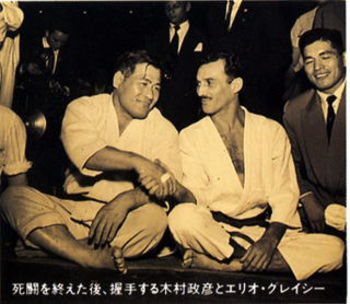
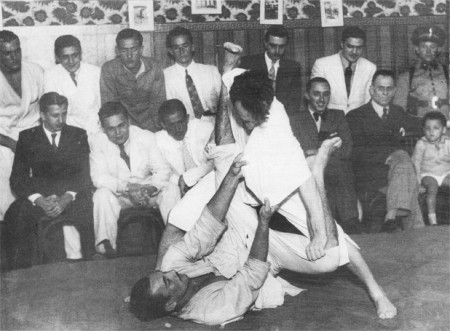
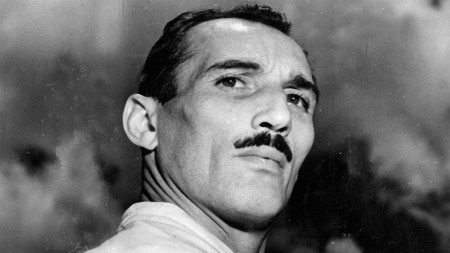
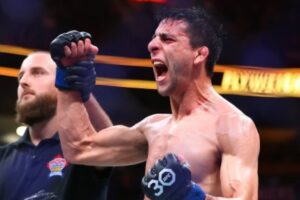
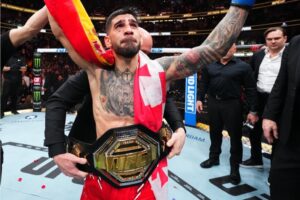
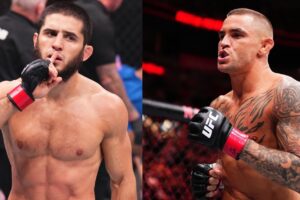
Comments